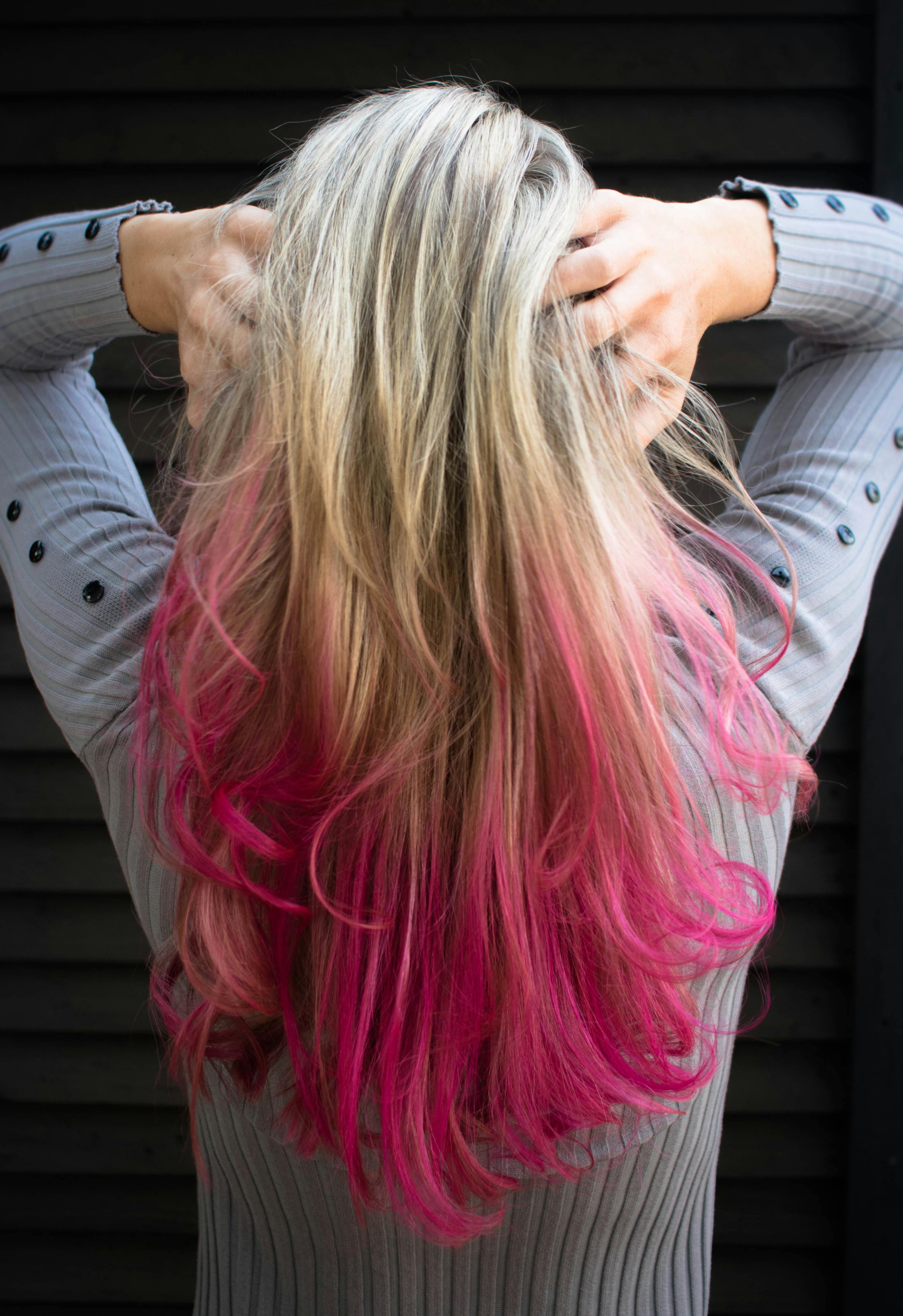Hair Breakage At Hairline
Hair Breakage at Hairline - What You Need to Know
Feeling a bit puzzled by those tiny, wispy hairs around your face? You know, the ones that seem to have a mind of their own, often looking shorter or a little rougher than the rest of your hair? You are certainly not alone if you've noticed this happening. This common hair issue, often called hair breakage at hairline, affects many people, no matter their hair type or how long their hair is. It can be a real source of frustration, making you wonder what is truly going on with your strands.
The delicate hair around your face is, in a way, more prone to damage than other parts of your head. This area, you see, is particularly open to various things that can cause trouble. Things like how you style your hair, the daily stresses you might experience, or even simply not getting enough of certain good things in your diet can all play a part. It's a bit like how a small plant needs just the right conditions to grow strong, and if those conditions are off, it might struggle. Your hairline, it seems, is a rather sensitive spot.
When we talk with people about their hair concerns, it's often the hairline that gets special attention. Many don't quite realize that the hair here, the strands right along the edge, are often finer and not as strong as the hair on the rest of their head. This makes them more likely to snap or break, especially if they aren't cared for very well. So, if you're seeing those little pieces of hair that look like they've broken off before they even had a chance to grow long, this information is probably for you.
- Sally Taylor Songs
- If I Like You Greys Anatomy
- When Is Ll Cool Js Birthday
- What Daytime Soaps Appeared In The Afternoon In The 80s
- Eating Out 2 Cast
Table of Contents
- What Causes Hair Breakage at Hairline?
- How to Help Prevent Hair Breakage at Hairline?
- Is It Hair Breakage at Hairline or Something Else?
- What to Do for Hair Breakage at Hairline?
- Caring for Your Crown and Other Spots of Hair Breakage
- How Can My Lifestyle Affect Hair Breakage at Hairline?
- Simple Steps for Stronger Hair Around Your Face
- A Final Thought on Hair Breakage at Hairline
What Causes Hair Breakage at Hairline?
So, what makes the hair along your hairline decide to snap? Well, it's a mix of things, actually. One of the biggest offenders, perhaps not surprisingly, is heat. Using hot tools, like hair straighteners, or setting your hair dryer to a very hot temperature, can cause a lot of trouble for those delicate strands. Anabel, a hair expert, points out that these are a frequent source of problems when it comes to hair breakage at the hairline. It's almost like cooking something too long; it just gets too dry and brittle.
But it's not just heat. The way you handle your hair matters a lot, too. For instance, pulling your hair back too tightly can put a lot of pressure on your hairline. If a hairstyle gives you a headache, it's probably too tight, and that pressure can cause the hair to break. Also, wearing your hair in the exact same style every single day can cause issues. It puts stress on the same spots repeatedly. This is, you know, a very common mistake people make without even thinking about it.
Then there's the stuff you put on your hair. Some products have what we might call "harsh ingredients," which can be a bit rough on your strands. And believe it or not, washing your hair too often can also make it more likely to break. It strips away some of the good things your hair needs to stay supple. Also, a very surprising cause for some people, particularly those with very curly or coarse hair, is the natural oil from their scalp. That oil, you see, often can't travel all the way down the length of the curl, leaving the ends, and often the hairline, feeling quite dry and open to damage. This is, in some respects, a natural challenge for certain hair types.
- Oversized Blue Blouse
- Music From Opening Ceremony
- Nancy Kerrigan Brother Jail
- How Old Is Rashida Nicole
- Msrachel Dylan
Another thing that can cause hair breakage at the hairline is brushing or combing in a way that isn't quite right. There's an old myth about brushing your hair 100 strokes a day, but that's really not true. It can actually cause more harm than good, especially if your brush has stiff bristles or you're pulling too hard. And, for instance, if you've done a lot of bleaching, coloring, or other treatments that put stress on your hair over time, your hair might be feeling very, very thirsty. This lack of moisture makes it more open to breaking.
How to Help Prevent Hair Breakage at Hairline?
Stopping hair from breaking, especially around your hairline, really begins with a good plan. It's like building a strong house; you need a solid base. One simple thing is to be gentle when you wash and condition your hair every day. You don't need to scrub it aggressively. A soft touch is often best. If you spend time in a pool, using a special swimmer's shampoo and conditioner set after your swim can help a lot. This protects your hair from the pool water's effects, which, you know, can be a bit drying.
Picking the right hair care products for your hair type and how you live your life is also a big step. What works for one person might not work for another. For example, if your hair feels dry and brittle along the edge of your hairline, and it looks uneven in length with split or frayed pieces, that's a pretty clear sign of breakage. A product with ingredients that help make hair stronger and reduce friction from brushing, like Redken's strength complex, can be very helpful. It leaves hair feeling healthy and looking good, which is, you know, what we all want.
Brushing your hair the right way is also very important. Make sure you don't brush wet hair, as it's more delicate when wet and can break more easily. When you do brush, use a gentle hand and a brush that's kind to your hair. This is, basically, a very simple habit that can make a big difference. Also, remember those tight hairstyles? Try to avoid them. Your hair should never feel like it's being pulled too hard. If it feels tight, it probably is. And, you know, mixing up your hairstyles instead of wearing the same one all the time can give your hair a break, too.
Another thing to keep in mind is the kind of hair ties you use. Rubber bands, for instance, can cause a lot more hair breakage around the hairline than actual fabric hair bands. So, you might want to choose those softer, real hair bands instead. It's a small change, but it can help a lot. Also, if you have those wispy baby hairs around your hairline, or new hair growing in, try not to style them too much. Let them be. This helps them stay healthy and grow without getting damaged, which is, in fact, a pretty good idea.
Is It Hair Breakage at Hairline or Something Else?
Sometimes, it can be a bit tricky to tell if what you're seeing is hair breakage at your hairline or if it's something else, like thinning hair from hair loss. Stylist and colorist Christin Brown often looks specifically at the hairline when clients talk about breakage. If you have a lot of broken pieces, it might look like your hair is getting thinner at first glance. However, there are some clear signs that point to breakage rather than hair loss.
With breakage, you might notice split ends or hairs that have snapped along the hair shaft. Your hair might also feel more brittle, almost like it could snap easily. If you pull back all your baby hairs, and your true hairline on one side seems to start much further back than the other, that could be a sign of breakage in that area. Also, if you notice more frizz than usual, especially along the hairline or at the ends, it may be because of breakage. This is, you know, a pretty common indicator.
Shedding hair is a normal part of your hair's growth cycle; it's just what hair does. Hair breakage, though, is not part of that normal cycle. It's a sign that something is putting stress on your hair. Wispy baby hairs, for example, grow around the hairline, while new hair growth appears everywhere and looks pretty uniform in length. Breakage, on the other hand, appears frayed and uneven. Knowing the difference helps you pick the right way to care for your hair. This distinction is, in fact, very important for getting your hair back to good health.
What to Do for Hair Breakage at Hairline?
If you've got hair breakage, especially around your hairline, there are some things you can do to help. One simple home remedy is to try putting coconut oil on your hair every night before bed. Then, wash it out in the morning. This can help add some much-needed moisture and softness to your hair, making it less likely to break. It's a pretty easy thing to try, and many people find it helpful, actually.
For more severe hair breakage, you might want to think about trying a shorter hairstyle, at least for a little while. This can give your hair a chance to recover and grow out the damaged parts. It also takes some of the pressure off those fragile ends. Sometimes, a fresh start is what your hair really needs. This could be, you know, a very liberating change for your hair.
Another trick is to gently gel down your baby hairs. This helps keep them from getting frizzy and knotty during the day. While some people worry about hair gel causing hair loss, it's generally not known to be a cause. The goal here is to protect those delicate strands from getting tangled and breaking off. It's a way to keep them neat and safe. This is, basically, a pretty good way to manage those little hairs.
And, you know, remember that product mentioned earlier, the one with Redken's strength complex? Using products that are made to help reduce friction and prevent further damage can be a real benefit. These kinds of products act like a deep conditioner, making your hair feel stronger and more flexible. When your hair is less likely to rub and snag, it's less likely to break. This is, in a way, like giving your hair a protective shield.
Caring for Your Crown and Other Spots of Hair Breakage
While we're talking about hair breakage at the hairline, it's worth noting that breakage can happen in other places, too, like at the crown or the back of your head. Breakage at the crown, for instance, can happen for a few reasons. Sometimes, the hair in this area just naturally has a slightly different feel or curl pattern. It's not uncommon for this part of your head to have a unique moisture level compared to the rest. This can make it more prone to issues, as a matter of fact.
Hair that sticks up along your part can also be a sign of damage, says Monahan. This can also be caused by using too much heat without the right protection. If you think about it, your baby hairs should really only be around your hairline. So, if you're seeing more small pieces of hair sticking up in other places, it might be a sign of trouble there too. This is, you know, something to keep an eye on.
Breakage at the back of the head is often because of sleeping on pillowcases that are a bit rough, or wearing hairstyles that put pressure on that part of your head. Just like with the hairline, being gentle and aware of how you treat your hair, even when you're sleeping, can make a difference. This is, in some respects, about being mindful of your hair all the time.
Continuous breakage, no matter where it is, can weaken your hair strands. If you don't do anything about it, it can lead to your hair looking thinner and even noticeable hair loss, especially at the hairline and crown. Dealing with breakage quickly and taking gentle care of your hair can help stop more damage and hair loss. This is, basically, about being proactive for your hair's well-being.
How Can My Lifestyle Affect Hair Breakage at Hairline?
It's not just about what you do to your hair directly; your overall way of life can also play a part in hair breakage around your hairline. To help keep hair breakage at bay, your hair care routine should really go hand-in-hand with a healthy way of living. This means thinking about what you put into your body, not just on your hair. It's a bit like how a plant needs good soil to grow strong roots, you know?
Eating a balanced diet that has enough proteins, vitamins, and minerals is very important. These are the building blocks for strong, healthy hair. If your body isn't getting what it needs, your hair might show it first. You can consider taking some vitamin supplements to help improve hair health, but this should only be done after talking with your doctor. They can help you figure out what's best for your particular needs. This is, you know, a very important step.
Mental stress, believe it or not, can also trigger hair problems, including breakage. When you're feeling a lot of stress, your body can react in ways that affect your hair's health. Finding ways to manage stress, whether it's through exercise, relaxation, or other activities you enjoy, can also contribute to healthier hair. It's all connected, really. So, taking care of your mind can, in fact, help your hair, too.
Simple Steps for Stronger Hair Around Your Face
To help stop hair breakage around your hairline, there are some simple, everyday things you can do. The hair strands right at your hairline are often finer and not as strong as the rest of your hair, making them more likely to break, especially if you don't care for them well. So, giving these delicate hairs a little extra attention can go a long way. It's almost like treating them with kid gloves, you know?
If you've noticed your hair around your hairline breaking even before it has a chance to grow into longer strands, it's a clear sign that some changes are needed. For example, some people found that stopping heat styling completely during times like the recent quarantine didn't actually help, and their breakage got worse. This shows that it's not just one thing, but a mix of habits that matter. It's, basically, about finding the right balance for your hair.
Making sure your hair is getting enough moisture is a big one. Dry hair is brittle hair. So, look for products that hydrate and nourish. And remember, gentle handling is key. That means less pulling, less tight styling, and being very soft when you brush or comb. If your hair feels dry, uneven in length, and brittle along the edge of your hairline, with split, frayed hairs, these are all signs that it needs some extra love. This is, in fact, a very clear message from your hair.
A Final Thought on Hair Breakage at Hairline
Hair breakage, particularly at the hairline, is a very common issue that can impact how your hair looks and feels. Understanding what hair breakage looks like, and what causes it, can truly help you keep your hair strong and looking good. From being mindful of heat styling and gentle with your brushing, to picking the right hair products and taking care of your body from the inside out, every little bit helps. Dealing with breakage quickly and practicing gentle hair care can really help stop further damage and hair loss. It's about giving your hair the kindness it deserves so it can grow and stay healthy.
- Irish Love Knot
- Dolly Parton Siblings Photo
- Cast Of Cold Copy
- Ice Spice Cross
- Did The Guy On Alone Australia Have A Heart Attack

50+ Trendy Hair Colour For Every Women : Cream Coffee Blonde Balayage

30 Gorgeous Spring Hair Colors That Will Be Huge in 2024 - Your Classy Look

1000+ Great Hair Photos · Pexels · Free Stock Photos